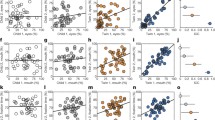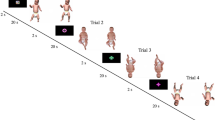Abstract
Observational drawing provides a means of focusing on anomalous infant bodies. Time required by drawing connects the artist to the humanity of the subjects rather than to the deformities that make them, initially, frightening.
Similar content being viewed by others
References
Garland-Thomson, Rosemarie. Extraordinary Bodies: Disability in American Culture and Literature (New York: Columbia University Press, 1997).
Squier, Susan Merrill. Babies in Bottles: Twentieth-Century Visions of Reproductive Technology (New Brunswick, New Jersey: Rutgers University Press, 1994).
Author information
Authors and Affiliations
Corresponding author
Additional information
Drawings reproduced in this article are available through Corbett vs. Dempsey Modern Art, 1120 North Ashland Avenue, Chicago, Illinois 60622, telephone 773/278-1664.
Rights and permissions
About this article
Cite this article
Starr, A. Looking in the Mirror: Images of Abnormally Developed Infants. J Med Humanit 26, 97–106 (2005). https://doi.org/10.1007/s10912-005-2912-4
Issue Date:
DOI: https://doi.org/10.1007/s10912-005-2912-4




